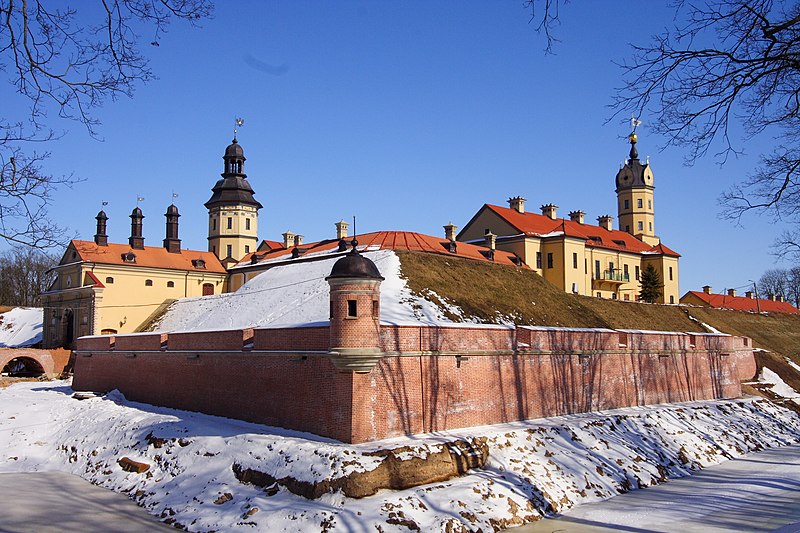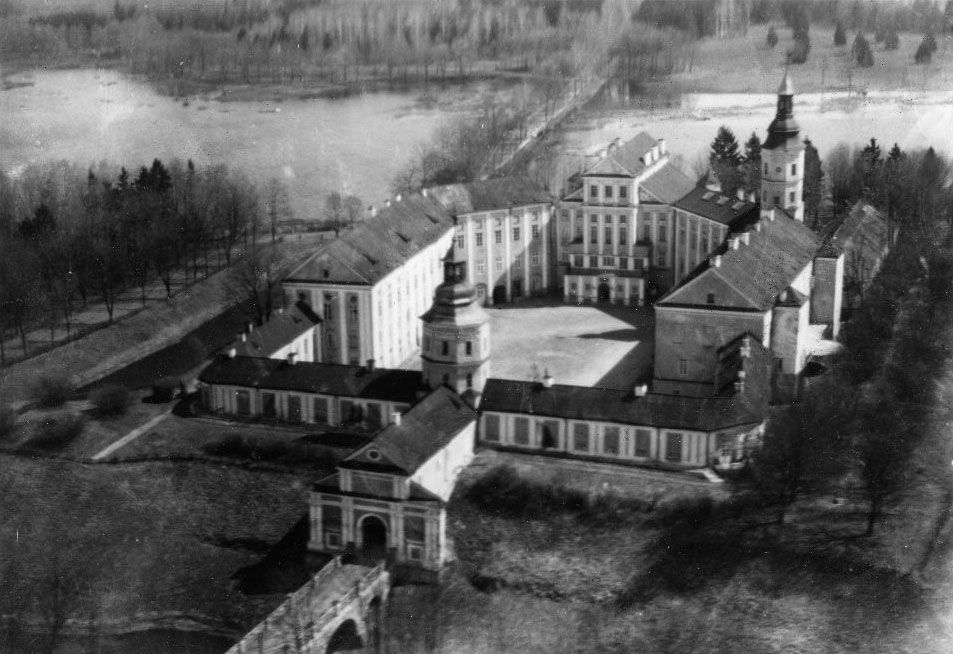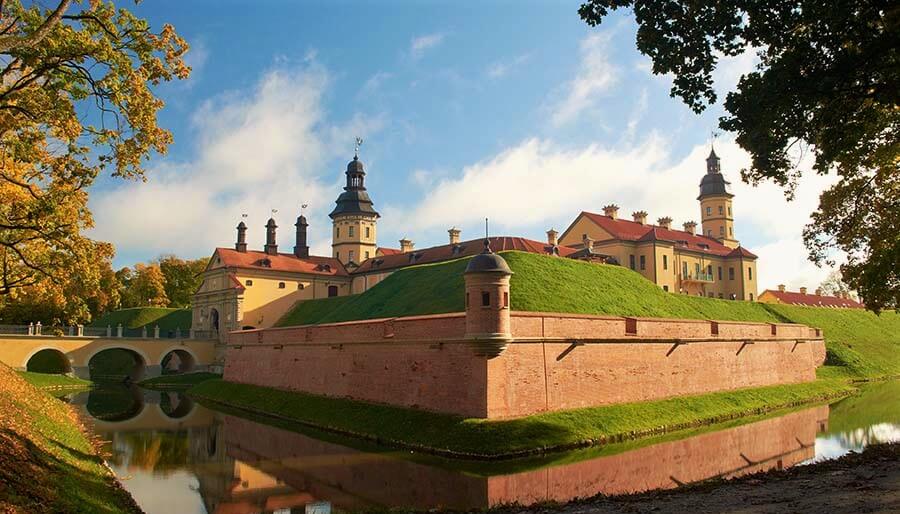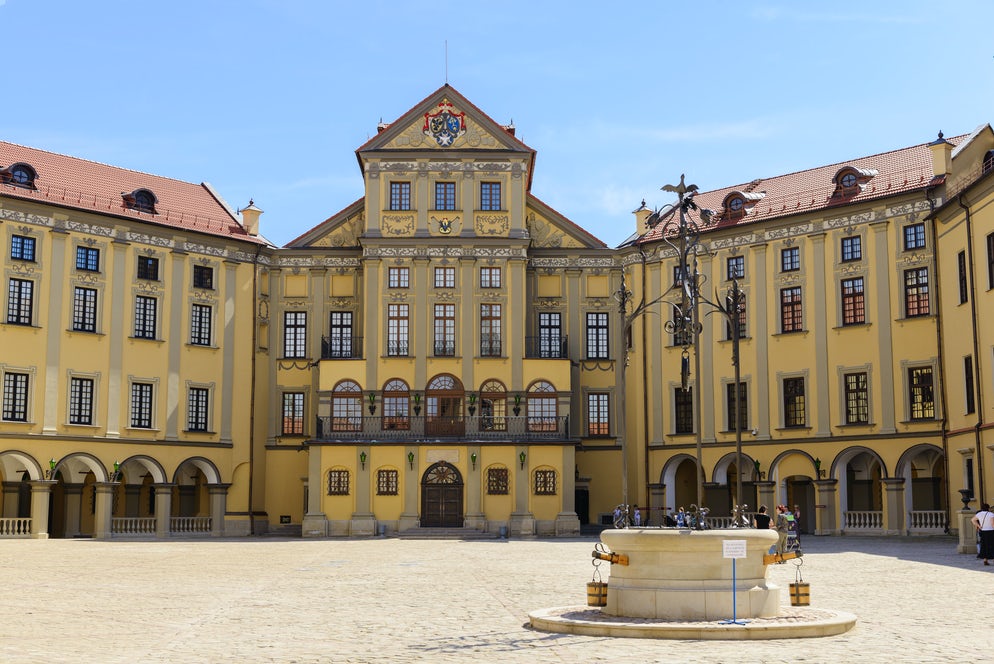At indiaimagine, you have already read about Belarus an offbeat destination yet the heart of Europe. In those articles, we have mentioned clearly the prominent attraction and heritage site. In the previous blog, we have discussed the Mir Castle complex, another complex that is quite famous in Belarus is the cultural complex of the Radziwill Family at Nesvizh. The title sounds very small but in reality, there is a big name for this heritage site. It goes like the Architectural, Residential and Cultural Complex of the Radziwill Family at Nesvizh in Belarus is designated as a UNESCO heritage site.
Let’s Discover more about the Cultural Complex of Belarus
Cultural Complex of the Radziwill Family
The Architectural, Residential and Cultural Complex of the Radziwill Family in Nesvizh is located in central Belarus. From the 16th century until 1939, the Radziwill dynasty constructed and maintained the castle and this beautiful complex. It has given birth to some of the most prominent figures in European history and culture.

The residential castle and the mausoleum Church of Corpus Christi with their background made this complex a tourist attraction in Belarus. The Nesvizh castle is made up of ten interconnected structures that form an amazing architectural view whole around a six-sided courtyard. The palaces and churches are the prominent highlights of the complex in Belarus.
Significance of Cultural Complex of the Radziwill Family
The Cultural Complex of the Radziwill Family had a significant impact on Central and Eastern European science, creativity, arts and architecture. The Radziwill dynasty built and these clusters of buildings and maintained this eye-catching landscape from 1583 to 1939. This has lead to the formation of Western traditions and the establishment of a new Central European school of architecture. The Radziwill family complex, particularly the towering basilica Corpus Christi mausoleum-church, marks an important turning point in the evolution of design and architecture.
History Associated the Nesvizh Castle Complex
Nesvizh Castle was established in the 16th century by the Radziwill family, who lived there until 1939. Giovanni Maria Bernardoni, a well-known Italian architect, was instrumental in the palace’s construction. Historians have written about the town of Nezvizh since the 15th century. However, it was only a minor village at the time. The Kiszka family owned the palace from 1494 and it was a tiny palace at the time. Anna Kiszka, a member of the family, married Ian Radzwill in 1513 and they became the owners of Nesvizh Castle.

Russians took Nesvizh Palace in 1770 and later in the 19th century, the Redziwill family renovated the palace and began to create enormous gardens as well in the complex. The castle was utilised as a sanatorium after World War II and the gardens were abandoned. Later it was inscribed on the UNESCO World Heritage List in 2006.
Also Read: Visit Historic Centre of Sheki And Khan’s Palace at Azerbaijan
Culture Complex Houses Many Things
This residential and cultural complex houses a palace, gallery, residence, family archive, arsenal and other interconnected buildings that make up the tiny castle. They are designed as a single architectural ensemble around a six-sided courtyard. The structures are encircled by a canal and are bordered by the ruins of 16th-century fortifications consisting of four bastions and four curtain walls in a rectangular form.

The castle is connected to Corpus Christi Church in Nesvizh’s nearby urban area by an earthen dam with a stone bridge. The buildings are set in a gorgeous environment with a succession of thematic parks and ponds.
Architecture of Cultural Complex of the Radziwill Family
The palace’s architectural styles, such as Renaissance, Baroque and Classicism, fascinate its visitors. Around the castle complex, there is also a lovely park. By the year 1600, the castle had been erected and rebuilt multiple times. The palace is built on a hill and is designed to look like an island.

The fact that Nesvizh Castle is surrounded by water adds to its appeal. Previously, only the movable bridge could be used to access the castle. They were raising the bridge to protect the fortress from the invaders during the invasions. There are four secret exits in the castle complex.
Also Read: Discover African Culture and Heritage at Royal Palaces of Abomey
Protection and Management Essentials
The state owns the castle, the church-mausoleum and the path that connects them. The Ecclesiastical Council is in charge of the church-mausoleum, which serves a religious purpose. Cultural Complex at Nesvizh is a Property of national importance and it is thus administered by the National Historical and Cultural Museum-Reserve “Nyasvizh.” In general, the Department for the Protection of Belarus Historical and Cultural Heritage coordinates all activities related to the property’s protection. The Management Plan seeks to organize the collective work for the protection of the Nesvizh urban landscape.
Other Activities to do Near Castle
The entrance to Nesvizh Castle is free and inside you can visit the protected exhibits. There is a hotel and a restaurant on the grounds of the palace, providing a wonderful opportunity to spend several days in this spectacular location. Your stay will be made much more interesting by the mediaeval atmosphere. If you prefer picnics, there is a park near the castle where you can do so. If you prefer an active vacation, you can also go fishing or horseback riding.
So whenever you are on a holiday trip to Belarus, learn the details of the Radziwiłł family and visit their property which is now known as the Nesvizh Castle complex.
Also Read: Mir Castle Complex – Heritage Site Showing Different Cultures of Belarus

